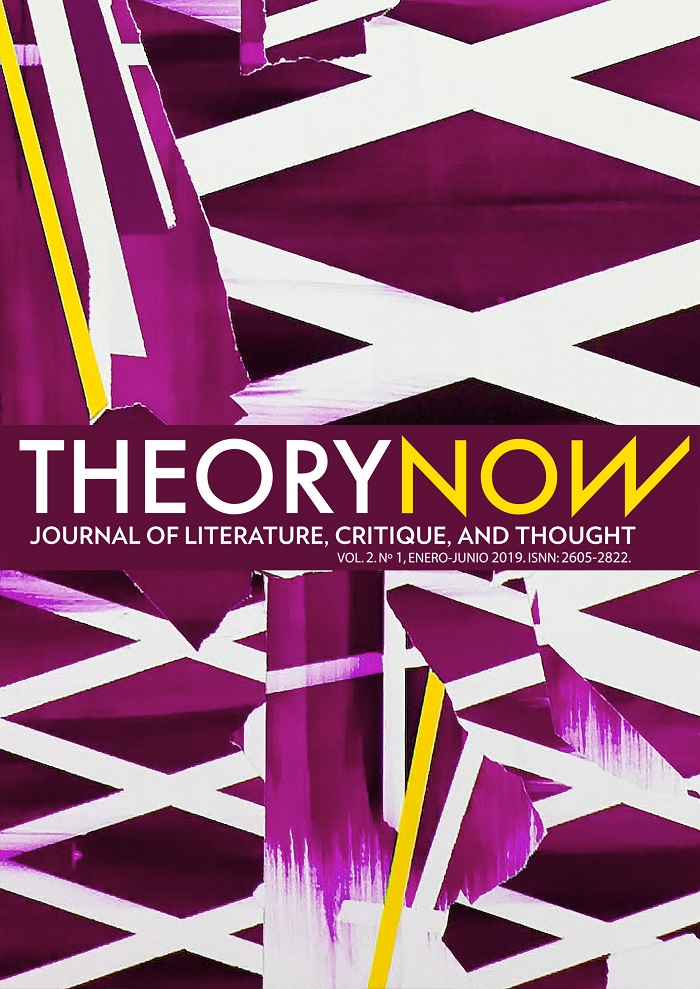Martin Jay: An Intellectual Picture
DOI:
https://doi.org/10.30827/tnj.v2i1.8624Keywords:
Martin Jay, Critical Theory, Visual Studies, Negativity, Parrhesia, PostsecularismAbstract
The following interview took place on June 6, 2018 as part of the interview series “The Intellectual and his/her Memory” of the School of Philosophy and Letters of the University of Granada. During the interview, Jay reflected upon his intellectual career, the current state of critical theory and dialectical categories, the status of truth in our time, postsecularism and identity politics.Downloads
References
Adorno, Theodor W. Negative Dialektik. Frankfurt, Suhrkamp, 1966.
_____. Ästhetische Theorie. Frankfurt, Suhrkamp, 1970.
_____. Minima Moralia. Translated by Dennis Redmond. London, Verso, 2005.
Geroulanos, Stefanos. Transparency in Postwar France. A Critical History of the Present. Stanford, Stanford University Press.
Habermas, Jürgen. Philosophical-Political Profiles. Translated by Frederick G. Lawrence. London, Heinemann, 1983.
_____. Die Neue Unübersichtlichkeit. Frankfurt, Suhrkamp, 1985.
Hitchens, Christopher. No One Left to Lie To: The Triangulations of William Jefferson Clinton. New York, Verso, 1999.
Horkheimer, Max. “Foreword”, in The Dialectical Imagination: A History of the Frankfurt School and the Institute of Social Research, 1923-50, by Martin Jay. Berkeley and Los Angeles, University of California Press, 1996.
Howard, Dick and Karl E. Klare. The unknown dimension: European Marxism since Lenin. New York, Basic Books, 1972.
Hughes, H. Stuart. Consciousness and Society: The Reorientation of European Social Thought. Cambridge, Harvard University Press, 1958.
_____. The Sea Change: The Migration of Social Thought, 1930-1965. New York, Harper & Row, 1975.
Inglorious Basterds. Directed by Quentin Tarantino. Universal Pictures, 2009.
Jay, Martin. The Dialectical Imagination: A History of the Frankfurt School and the Institute of Social Research, 1923-50. Berkeley and Los Angeles, University of California Press, 1973.
_____. Adorno. Cambridge, Harvard University Press, 1984.
_____. Marxism and Totality: The Adventures of a Concept from Lukács to Habermas. Berkeley and Los Angeles, University of California Press, 1984.
_____. Downcast Eyes: The Denigration of Vision in Twentieth-Century French Thought. Berkeley and Los Angeles, University of California Press, 1993.
_____. Songs of Experience: Modern American and European Variations on a Universal Theme. Berkeley and Los Angeles, University of California Press, 2004.
_____. “Visual Parrhesia? Foucault and the Truth of the Gaze”. A Time for the Humanities: Futurity and the Limits of Autonomy, edited by James J. Bono et al. New York, Fordham University Press, 2008, pp. 45-58.
_____. The Virtues of Mendacity: On Lying in Politics. Charlottesville, University of Virginia Press, 2010.
_____. Reason After its Eclipse: On Late Critical Theory. Madison, University of Wisconsin Press, 2016.
_____. “Can Photographs Lie? Reflections on a Perennial Anxiety,” Critical Studies, 2, September 2016, pp. 6-19.
Marcuse, Herbert. Eros and Civilization. Boston, Beacon Press, 1955.
_____. One-Dimensional Man. Boston, Beacon Press, 1964.
Keesling, Jamie and Spencer A. Leonard. “Critical Theory, Marxism, social evolution: An interview with Martin Jay”. Platypus Review, 83, 2016, https://platypus1917.org/2016/01/30/critical-theory-marxism-social-evolution-an-interview-with-martin-jay/. Accessed 21 December 2018.
Williams, Bernard. Truth and Truthfulness An Essay in Genealogy. Princeton, Princeton University Press, 2002.
Downloads
Published
How to Cite
Issue
Section
License
Theory Now. Journal of Literature, Critique, and Thought is an immediate open-access publication which is available at no cost for readers and authors alike. Authors are not charged any kind of fee for the editorial processing of their articles. Reading, downloading, copying, distributing, printing, searching, linking or reusing all published articles for non-commercial uses is allowed on the condition of citing the author, the journal and the editing body. All intellectual material published in this journal is protected under a Creative Commons Attribution-NonCommercial 3.0 Spain license.
Dissemination of the articles in social (Facebook, Twitter, Linkedin, etc.) and scientific networks (ResearchGate, Academia.edu, etc.), public repositories at universities and other institutions, blogs, personal or institutional websites, Google Scholar, ORCID, ResearchID, ScopusID, etc. is strongly encouraged. In all cases, the intellectual property of the articles and any possible monetary profits derived from them belong exclusively to the authors.













